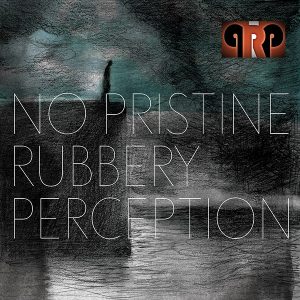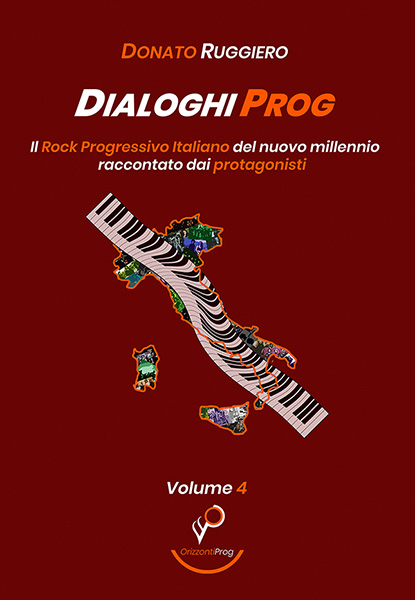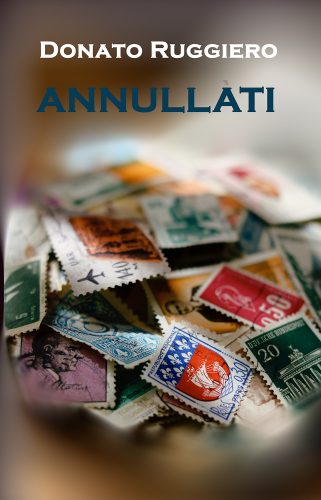 PRP
PRP
No Pristine Rubbery Perception (2021)
Inverse Records
PRP, ossia Petteri Kurki (voce, chitarre, sintetizzatori, basso, composizione e programmazione batteria e percussioni) e Rami Turtiainen (voce, chitarre, sintetizzatori, composizione e programmazione batteria e percussioni), dopo un primo assaggio offerto nel 2017 (“Rubber Sun”), raggiungono finalmente la “meta”.
Nata come side-project dei Grus Paridae, progetto creato dallo stesso duo finlandese, la “costola” è riuscita incredibilmente a superare il “genitore” e a pubblicare un album intero. Ecco, dunque, No Pristine Rubbery Perception, un lavoro che, partendo da quell’idea di dare spazio a brani più (prog) rock di quelli consoni ai Grus Paridae, trova la sua dimensione tra atmosfere dalle forti tinte scure, ottimi intrecci di corde e synth, voci e ritmiche sempre in tensione. Quanto offerto dai PRP sembra palesarsi quale materiale compatto, coeso, ma altamente delicato, i suoni sono decisi, taglienti, ma sanno mutare pelle divenendo più morbidi. E, grazie a queste caratteristiche, i due sono abili a non fossilizzarsi su di un genere musicale ma a perlustrarne e amalgamarne diversi: è così che ci si ritrova allora tra psichedelia, new wave, progressive rock e altro ancora. E il tutto viene “sigillato” anche da un tocco di mistero, di ambiguità, che rivive appieno pure nell’artwork di Johanna Luoma-Tuominen.
Rubber Hands, Pt. 0 – Prelude of the Distant Past. Tutto molto etereo, quasi impalpabile, il cammino del brano d’apertura di No Pristine Rubbery Perception, con chitarre sfiorate e tocchi elettronici delicati, tutto un po’ floydiano.
Rubber Hands. E dopo lo stato di trance offerto da Pt. 0, il frantumarsi improvviso di vetri frantuma anche il nostro stato di “sospensione” e veniamo catapultati in un vorticoso gioco di ritmiche e chitarre, con il canto effettato ben inserito nel contesto. E la tensione resta sempre alta grazie alle taglienti soluzioni offerte dalle corde Kurki e Turtiainen e il passo sempre sostenuto delle ritmiche.
Con un tocco new wave prende il via No, mantenendolo poi ben saldo anche quando subentra il canto, un po’ Joy Division e un po’ The Cure. E quando il brano si “gonfia” ecco apparire sprazzi interessanti che richiamano lievemente Yes e Blackfield. Tutto poi scorre via con il solito ottimo lavoro solitario di chitarra e l’andatura importante di batteria e basso.
Placida prende corpo Rubber Hands, Pt. II, con il suo cammino lento, avvolgente, ipnotico, che coinvolge sintetizzatori, chitarra e poi voci. L’assolo drammatico alla Brian May emerge quasi a metà percorso a spezzare il tutto. “Botta di calore” in coda.
Uno “scontro gentile” tra piano e chitarra occupa le prime battute di Exp, prima che l’ultima prenda il sopravvento. E il brano decolla per poi planare in momenti antitetici, dapprima favolistici e poi sinistri. E senza patemi i due protagonisti avanzano alternandosi sulla scena mettendo in atto uno dei punti più alti dell’album.
Un ricamo chitarristico un po’ Jethro Tull e un po’ PFM dà il via a It’s Never Always. E con questo animo tra il folk e l’acustico si procede spediti finché le corde non attirano a sé batteria e tastiere e il brano ne guadagna in intensità, sino a consegnarsi nuovamente, completamente, nelle mani della chitarra acustica.
Decisamente aggressiva la partenza di Rubber Hands, Pt. III – The Sea of Streets, nel suo vorticare di chitarre, ritmiche e voci, prima di piombare, per un momento, nell’angosciante sensazione di essere circondati da fantasmi (sensazione che torna anche oltre). A metà percorso, una sfuriata alla The Mars Volta fa impennare il brano, il quale avanza, poi, tra galoppate e momenti di calma.
Carica di tensione e mistero la Bonus Track SunSon, il suo passo è piuttosto intenso e i giochi di chitarra, alla lunga, si fanno ipnotici. L’acustica tenta, in seguito (e per due volte), di spazzare tutto via ma è una lotta impari e l’elemento più cupo ha facilmente la meglio. In tutto ciò l’uso delle voci è perfettamente centrato e le “derive” psichedeliche non guastano affatto il quadro totale.
Rami Turtiainen e Petteri Kurki avevano già lasciato intuire grandi capacità con l’EP “Rubber Sun” (e con i Grus Paridae). Con questo lavoro hanno compiuto decisamente un balzo qualitativo in avanti.
ENGLISH VERSION
 PRP
PRP
No Pristine Rubbery Perception (2021)
Inverse Records
PRP, in other words, Petteri Kurki (vocals, guitars, synths, basses, drum and percussive composing and programming) and Rami Turtiainen (vocals, guitars, synths, drum and percussive composing and programming), after a first glimpse offered in 2017 (“Rubber Sun”), finally reach the “goal”.
Born as a side-project of Grus Paridae, a project created by the Finnish duo themselves, the “rib” has incredibly managed to overcome the “parent” and release a full-length album. So, here’s No Pristine Rubbery Perception, a work that, starting from the idea of giving space to more (prog) rock songs than Grus Paridae’s ones, finds its dimension among atmospheres with strong dark tones, excellent interlacing of strings and synths, voices and rhythms always in tension. PRP offer seems to reveal itself as a compact, cohesive, but highly delicate material, the sounds are decisive, sharp, but can change skin becoming softer. And thanks to these characteristics, the two are able not to fossilize themselves in one musical genre but to explore and mix different ones: this is how we find ourselves among psychedelia, new wave, progressive rock and more. And the whole is “sealed” also by a touch of mystery, of ambiguity, which fully revives also in the artwork by Johanna Luoma-Tuominen.
Rubber Hands, Pt. 0 – Prelude of the Distant Past. All very ethereal, almost impalpable, the path of the opening track of No Pristine Rubbery Perception, with brushed guitars and delicate electronic touches, all a bit Floydian.
Rubber Hands. And after the trance-like state of Pt. 0, the sudden shattering of glass shatters our state of “suspension” and we are catapulted into a whirling game of rhythms and guitars, with effected singing well inserted in the context. And the tension is always high thanks to the sharp solutions offered by Kurki and Turtiainen’s strings and the steady pace of the rhythms.
With a new wave touch, No starts off, keeping it firm even when the singing takes over, a bit Joy Division and a bit The Cure. And when the song “swells”, there are interesting flashes that slightly recall Yes and Blackfield. Then everything flows away with the usual excellent solo guitar work and the remarkable pace of drums and bass.
Placid begins Rubber Hands, Pt. II, with its slow, enveloping, hypnotic journey involving synthesizers, guitar and then vocals. The dramatic Brian May-style solo emerges almost halfway through to break it all up. “Heatstroke” at the end.
A “gentle clash” between piano and guitar occupies the first bars of Exp, before the last one takes over. And the song takes off, then glides into antithetical moments, first fabulous and then gloomy. The two protagonists move forward without any problem, alternating on the scene and performing one of the highest moments of the album.
A guitar embroidery, a little bit Jethro Tull and a little bit PFM, starts It’s Never Always. And with this soul between folk and acoustic, we go on until the strings attract drums and keyboards and the song gains in intensity, until it comes back, completely, in the hands of the acoustic guitar.
The start of Rubber Hands, Pt. III – The Sea of Streets is decidedly aggressive, with its whirling guitars, rhythms and voices, before plunging for a moment into the anguished sensation of being surrounded by ghosts (a sensation that comes back even further). Halfway through the track, a The Mars Volta-esque outburst revs up the song, which then progresses between gallops and moments of calm.
Bonus Track – SunSon is full of tension and mystery, its pace is quite intense and the guitar playing becomes hypnotic in the long run. The acoustic then tries (twice) to sweep everything away but it’s an unequal fight and the darker element easily gets the better of it. The use of voices is perfectly centred and the psychedelic “drifts” do not spoil the total picture.
Rami Turtiainen and Petteri Kurki had already shown their great skills with the EP “Rubber Sun” (and with Grus Paridae). With this work they have definitely made a qualitative leap forward.









Lascia un commento